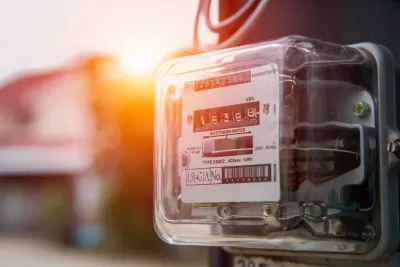The new standards are expected to lower energy costs for low-income households.

A new set of building codes for affordable housing developments funded by federal dollars target energy efficiency, reports Kriston Capps for Bloomberg CityLab. “The standards will translate to lower costs for households least able to afford high energy prices, according to federal officials. Lower-income households spend on average 8% of their income on energy, compared to a national average of 3%, per the US Department of Housing and Urban Development.”
The updated rules satisfy a 2007 law that required HUD to periodically update its energy efficiency codes. “The federal agencies have been out of compliance since 2015, however, so this overhaul will result in a significant leap in terms of code editions and energy savings,” according to Capps. The new International Energy Conservation Code standard for homes and small multifamily buildings is 34 percent more efficient than the 2009 edition currently in use.
HUD says the rule will affect roughly 150,000 new units each year. The new standards could raise construction costs by roughly $7,229 per single-family home. “To offset the cost of upgrades, tax credits created by the Inflation Reduction Act and other rebates can save homebuilders between $2,500 and $5,000 for meeting higher energy standards.”
FULL STORY: Biden Rolls Out New Minimum Energy Standards for Affordable Housing

Alabama: Trump Terminates Settlements for Black Communities Harmed By Raw Sewage
Trump deemed the landmark civil rights agreement “illegal DEI and environmental justice policy.”

Planetizen Federal Action Tracker
A weekly monitor of how Trump’s orders and actions are impacting planners and planning in America.

Why Should We Subsidize Public Transportation?
Many public transit agencies face financial stress due to rising costs, declining fare revenue, and declining subsidies. Transit advocates must provide a strong business case for increasing public transit funding.

Understanding Road Diets
An explainer from Momentum highlights the advantages of reducing vehicle lanes in favor of more bike, transit, and pedestrian infrastructure.

New California Law Regulates Warehouse Pollution
A new law tightens building and emissions regulations for large distribution warehouses to mitigate air pollution and traffic in surrounding communities.

Phoenix Announces Opening Date for Light Rail Extension
The South Central extension will connect South Phoenix to downtown and other major hubs starting on June 7.
Urban Design for Planners 1: Software Tools
This six-course series explores essential urban design concepts using open source software and equips planners with the tools they need to participate fully in the urban design process.
Planning for Universal Design
Learn the tools for implementing Universal Design in planning regulations.
Caltrans
Smith Gee Studio
Institute for Housing and Urban Development Studies (IHS)
City of Grandview
Harvard GSD Executive Education
Toledo-Lucas County Plan Commissions
Salt Lake City
NYU Wagner Graduate School of Public Service





























